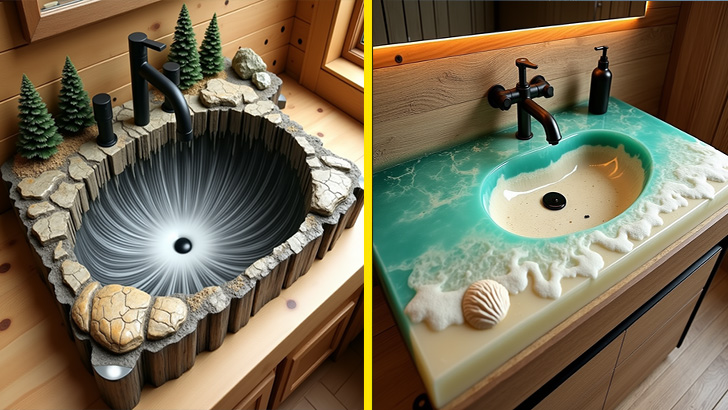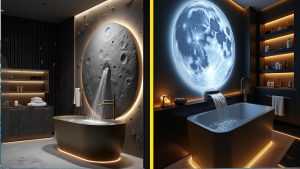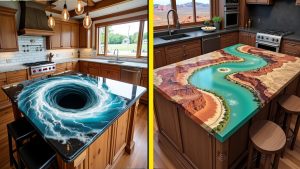Imagine stepping into your bathroom and instantly feeling like you’re in a serene forest, a tranquil riverbank, or a lush underwater reef. That’s the magic of epoxy nature sinks—a stunning marriage of natural elements and modern resin art that’s captivating homeowners and designers alike. These jaw-dropping pieces are more than just functional sinks; they’re masterpieces that bring a breath of nature into your daily routine.
Let’s dive deep into the world of epoxy nature sinks and see why they’re becoming the new gold standard in bathroom design.
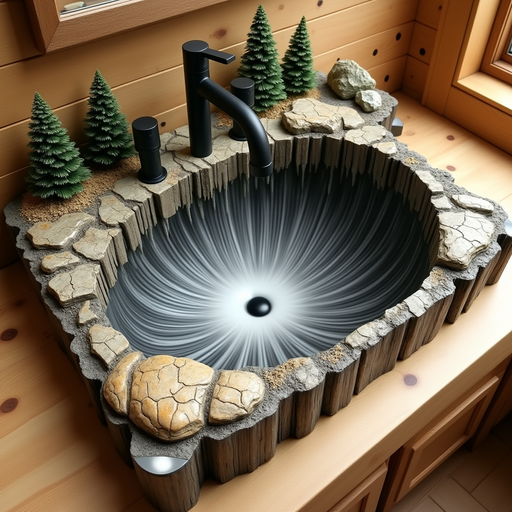
What Are Epoxy Nature Sinks?
A New Wave in Bathroom Design
Epoxy nature sinks are custom-made basin designs where epoxy resin—a clear or colored synthetic compound—is mixed with natural elements like wood, stones, moss, or shells to create an organic, artistic effect. The result? A functional sink that looks more like a museum piece than a utility fixture.
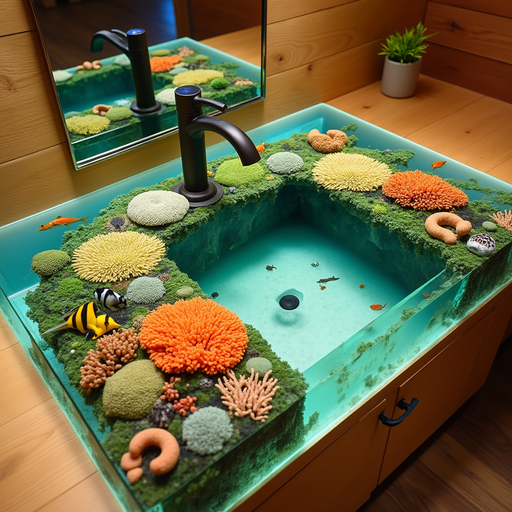
The Art of Combining Epoxy and Natural Elements
The process of crafting an epoxy nature sink is akin to painting with resin and earth. Designers strategically place wood grains, rocks, and other natural materials into a mold and then pour epoxy over it. This not only seals the elements in place but also gives the sink a glass-like finish that’s both beautiful and durable.
Why Epoxy Nature Sinks Are Taking Over Modern Homes
Eye-Catching Aesthetics That Wow Guests
Let’s be honest—nobody forgets the first time they see a sink that looks like a glowing riverbed or a mossy forest floor. These sinks act as conversation starters, focal points, and even artistic statements in any home.
Customization Possibilities are Endless
Whether you want your sink to match your rustic cabin vibe or you’re into sleek, modern lines, epoxy nature sinks are fully customizable. From the colors of the epoxy to the type of wood or natural element used, the choices are nearly infinite.
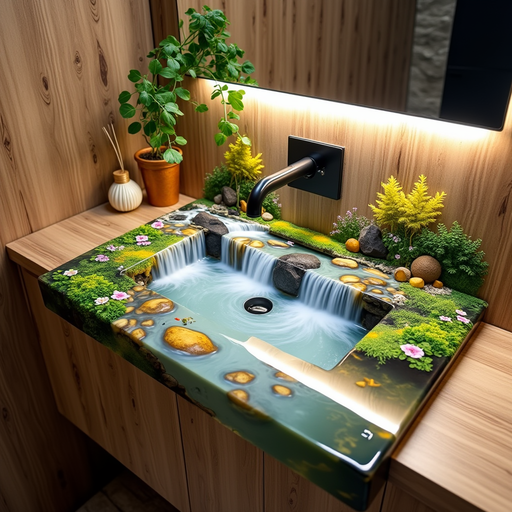
Eco-Inspired Living Spaces
Nature-inspired interiors are trending for a reason—they bring calmness and a sense of wellness. Epoxy nature sinks help build that biophilic environment, integrating natural materials into everyday objects.
Materials Used in Epoxy Nature Sinks
Epoxy Resin: The Star Ingredient
Epoxy is a thermosetting polymer that hardens into a clear, durable surface. It’s what binds and protects the natural elements inside the sink and gives it that glossy, crystal-clear appearance.
Incorporating Natural Elements
-
Live-edge wood gives a raw, organic feel.
-
Pebbles and stones mimic riverbeds.
-
Moss, bark, and shells bring a forest or coastal vibe.
-
Pressed flowers or leaves can add delicate accents.
The Role of LED Lighting in Epoxy Sinks
Some designers go the extra mile by embedding LED lights beneath the epoxy, creating a surreal glow—especially in low light settings. Think of it as a functional lava lamp, but much classier.
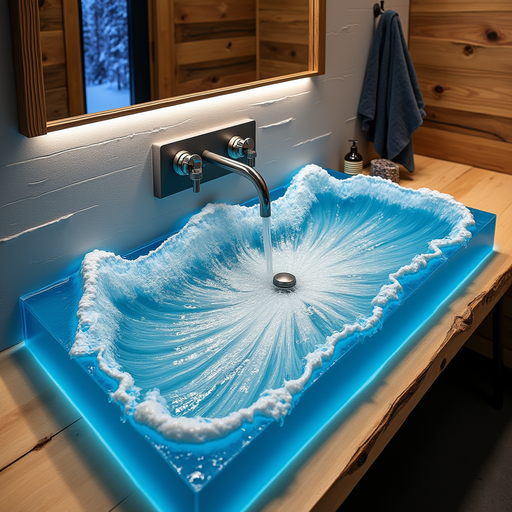
Popular Styles and Themes of Epoxy Sinks
River-Inspired Designs
These mimic the flow of a real river, with blue or turquoise epoxy simulating water flowing through wood “banks.”
Forest Floor Sinks
Filled with tiny ferns, bark pieces, and moss, these sinks bring the forest indoors, perfect for nature lovers.
Ocean and Coral Reef Themes
Using shells, sand, and aqua-colored resin, these evoke coastal serenity and the mysteries of the sea.
Futuristic and Abstract Variations
Want something truly unique? Go for abstract swirls, marbled colors, or even galaxy-themed designs.
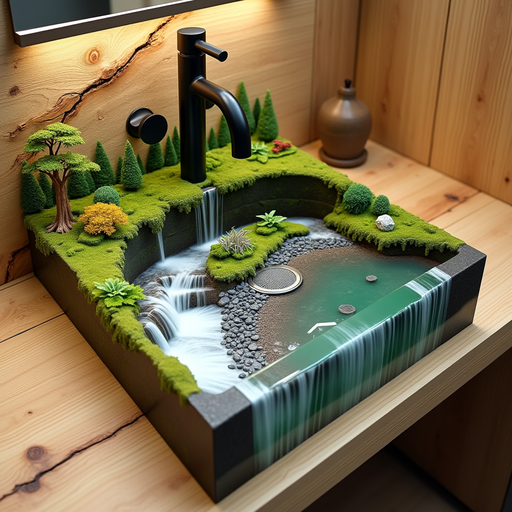
How Epoxy Nature Sinks Are Made
The Design and Planning Stage
Every sink starts with a vision. Designers collaborate with clients to sketch out the layout, decide on materials, and plan dimensions.
Creating the Mold and Layout
A mold is created to shape the sink. Elements like wood, rocks, and moss are arranged carefully—kind of like a zen garden before the epoxy pour.
Pouring and Curing the Epoxy
Multiple layers of epoxy are poured in stages to prevent bubbles. It’s then cured for several days to harden completely.
Finishing Touches and Sealing
Once cured, the sink is polished, sanded, and sealed. Edges are smoothed out and, if needed, lights or faucets are installed.

Durability and Longevity
Are Epoxy Sinks Built to Last?
Absolutely. Epoxy is water-resistant, scratch-resistant, and holds up well under daily use. When properly sealed, these sinks can last decades.
How They Stand Up to Moisture and Daily Use
They’re made to handle wet environments. Just make sure to avoid harsh chemicals or extreme heat, and they’ll stay gorgeous.
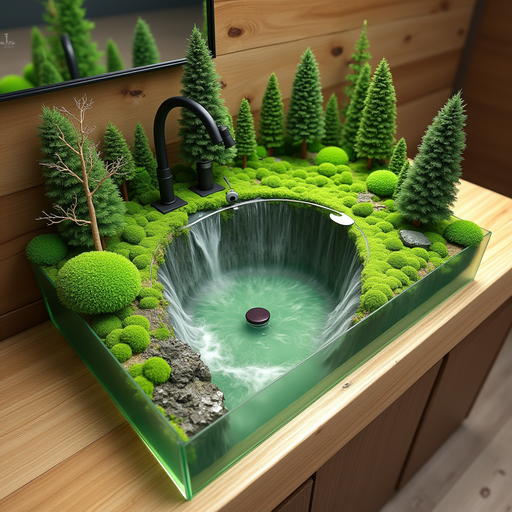
Maintenance and Care Tips
Cleaning Without Damaging the Surface
Use mild soap and a soft cloth. Avoid abrasive scrubbers or acidic cleaners which can dull the finish.
What to Avoid to Keep Your Sink Looking New
-
Boiling water directly in the sink
-
Dragging metal objects across the surface
-
Using bleach or harsh solvents
Where to Buy Epoxy Nature Sinks
Custom Designers vs. Mass Retailers
You can find artists on platforms like Etsy or Instagram who build stunning custom sinks to order. Some high-end home improvement stores are also hopping on the trend.
Etsy, Instagram, and Craft Marketplaces
Search terms like “epoxy sink” or “nature-inspired resin sink” will yield incredible artisans and shops.
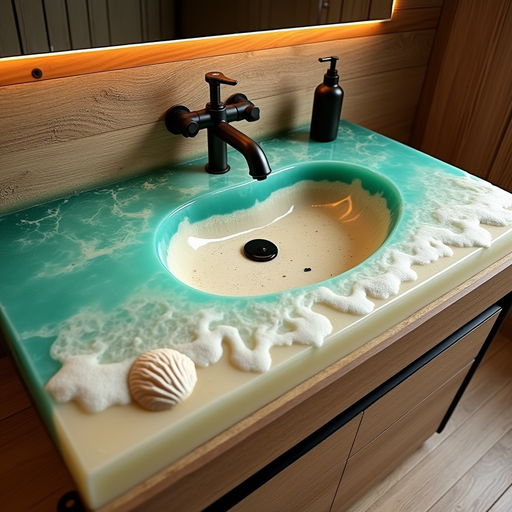
Cost Breakdown
What Influences the Price?
-
Size and complexity of the design
-
Type of natural materials used
-
Addition of lighting or extra features
-
Labor and shipping costs
DIY vs. Commissioning a Custom Sink
DIY can save money but requires tools, time, and skill. Commissioned sinks may cost $1,000–$3,000 or more, depending on the intricacy.
DIY Epoxy Nature Sink: Can You Make One?
Tools and Materials Needed
-
Epoxy resin
-
Mold (sink-shaped)
-
Natural elements (wood, stones, moss)
-
Gloves, goggles, mixer, and torch
Step-by-Step Basics
-
Build or buy a mold
-
Arrange your natural items
-
Mix and pour epoxy in layers
-
Let cure
-
Sand and polish
-
Install the sink
Pros and Cons of DIY
Pros: Cost-saving, personalized, fun project
Cons: Time-consuming, room for error, requires equipment
Trending Colors and Textures
Natural Wood and Blue Resin Combo
A classic that resembles flowing water through earthy terrain.
Earth Tones, Greens, and Mossy Textures
Great for bathrooms that want that forest retreat feel.
Epoxy Nature Sinks in Commercial Spaces
Hotels, Restaurants, and Spas Going Natural
These sinks are now being spotted in luxury lodges, wellness centers, and upscale cafes.
Making a Bold Statement in Business Spaces
Unique sinks elevate branding and enhance customer experience with memorable design.
Sustainable and Eco-Friendly Aspects
Sourcing Sustainable Wood
Using reclaimed or responsibly-sourced wood makes your sink eco-conscious.
Low-VOC and Non-Toxic Epoxy Options
Modern epoxy options are environmentally safer, minimizing chemical exposure.
Pros and Cons of Epoxy Nature Sinks
Advantages That Make Them Worthwhile
-
Uniqueness
-
Beauty
-
Durability
-
Customization
Challenges and Things to Consider
-
Cost
-
Weight
-
Maintenance knowledge required
Final Thoughts: Is It Time to Upgrade Your Sink?
If you’re craving a space that feels more connected to nature, adds a touch of luxury, and sparks conversation—then yes, it’s definitely time. Epoxy nature sinks are more than just functional fixtures. They’re investments in atmosphere, artistry, and individuality.
FAQs
1. Are epoxy nature sinks safe to use daily?
Yes! They are durable and safe when properly made and sealed.
2. How long does it take to make one?
On average, it takes 1–2 weeks depending on complexity and curing time.
3. Can I install an epoxy sink myself?
If you’re handy with plumbing and carpentry, yes. Otherwise, it’s best to get professional help.
4. Will the colors or materials fade over time?
Not if it’s made with high-quality, UV-resistant epoxy and maintained well.
5. Is epoxy environmentally friendly?
While traditional epoxy has some environmental impact, many brands now offer low-VOC, eco-safe options.
